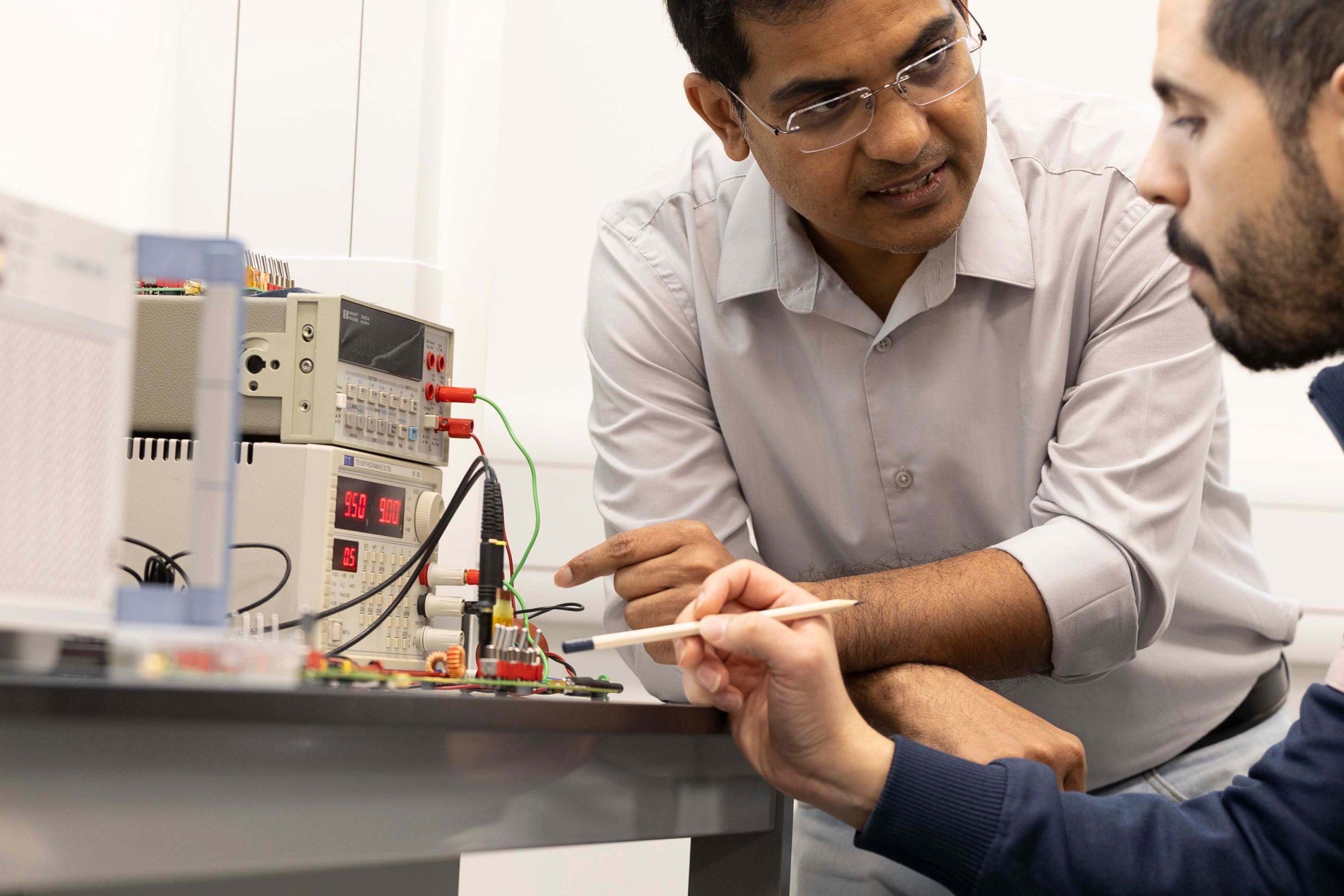

Integrated Magnetics
MagIC – Making magnetics disappear into ICs.
Tyndall’s MagIC technology makes bulky magnetics components in electronic equipment disappear onto/into the silicon chip. Using MagIC technology, electronics are able to use power more efficiently by minimising the energy wasted or lost as the battery powers the microprocessor chip. This improved efficiency extends the charge time of batteries by more than 50%. The breakthrough technology is having a huge impact on markets for mobile phones, IT equipment, and any device needing a battery.
Our Integrated Magnetics research programme is widely recognised as a World Thought Leader in the area of Integrated Magnetic Passives for Power Supply on Chip (PwrSoC) technology. With over 100 years of research effort in this field, the team has created a multi-disciplinary skill set for Power Magnetics research that makes it uniquely placed within the global Power Electronics research landscape.
This programme has had a very strong commercial impact with R&D partnerships, technology transfer and licensing with some of the world’s leading companies in magnetic components, silicon foundries, wafer-level assembly, SoC and electronics systems design.
Our mission is to inspire technological breakthrough towards sustainable Integrated Magnetics by delving deep into atomic-scale aspects of materials, and using ingenious device design and creative system-level integration, combined with our full-spectrum best-in-class metrology.

Research Challenge
Currently, there are 15 billion mobile devices operating worldwide with this figure expected to increase to 18 billion by 2025. Tyndall’s MagIC technology could play a key role in reducing energy consumption in this sector.
Research Focus
Over a period of 20 years, our team has demonstrated world-beating results in the area of Integrated Magnetics for On-Silicon and PCB-embedded applications. We have developed innovative solutions in all aspects of Power Magnetics research, including design, material and process development, micro-nano fabrication, advanced material and electrical characterisation, packaging and reliability.
These solutions and subsequent more efficient use of power represent big savings on the amount of energy we use globally to charge our personal devices.
Recent Publications
G. Wei, R. Das, D. Lordan, M. Lorenc; B. Clarke, D. P. F. Hurley; M. Hayes, C. O’Mathuna; R. Sai, P. McCloskey,
“Investigation on the Soft-Magnetic Properties of CoZrTaB Laminated Cores by Dielectric Layer Tuning“, IEEE Magn. Lett. 14, 1–5 (2023).
R. Das, G. Wei, D. Lordan, M. Hayes, B. Clarke, D. Hurley; C. O’Mathuna; R. Sai, P. McCloskey,
“Enhanced Soft Magnetic Properties in N-Doped Amorphous FeCo Thin Film“, IEEE Trans. Magn. 1–1 (2023).
R. Das, L. Ye, S. S. Lal, H. A. Baghbaderani, R. Sai; M. Hayes, M. A. Morris, P. McCloskey,
“Fabrication and Soft Magnetic Properties of FeSiB Based Flakes with Insulating Surface Layer Suitable for High Frequency Power Applications“, AIP Adv.13 (2) (2023).

